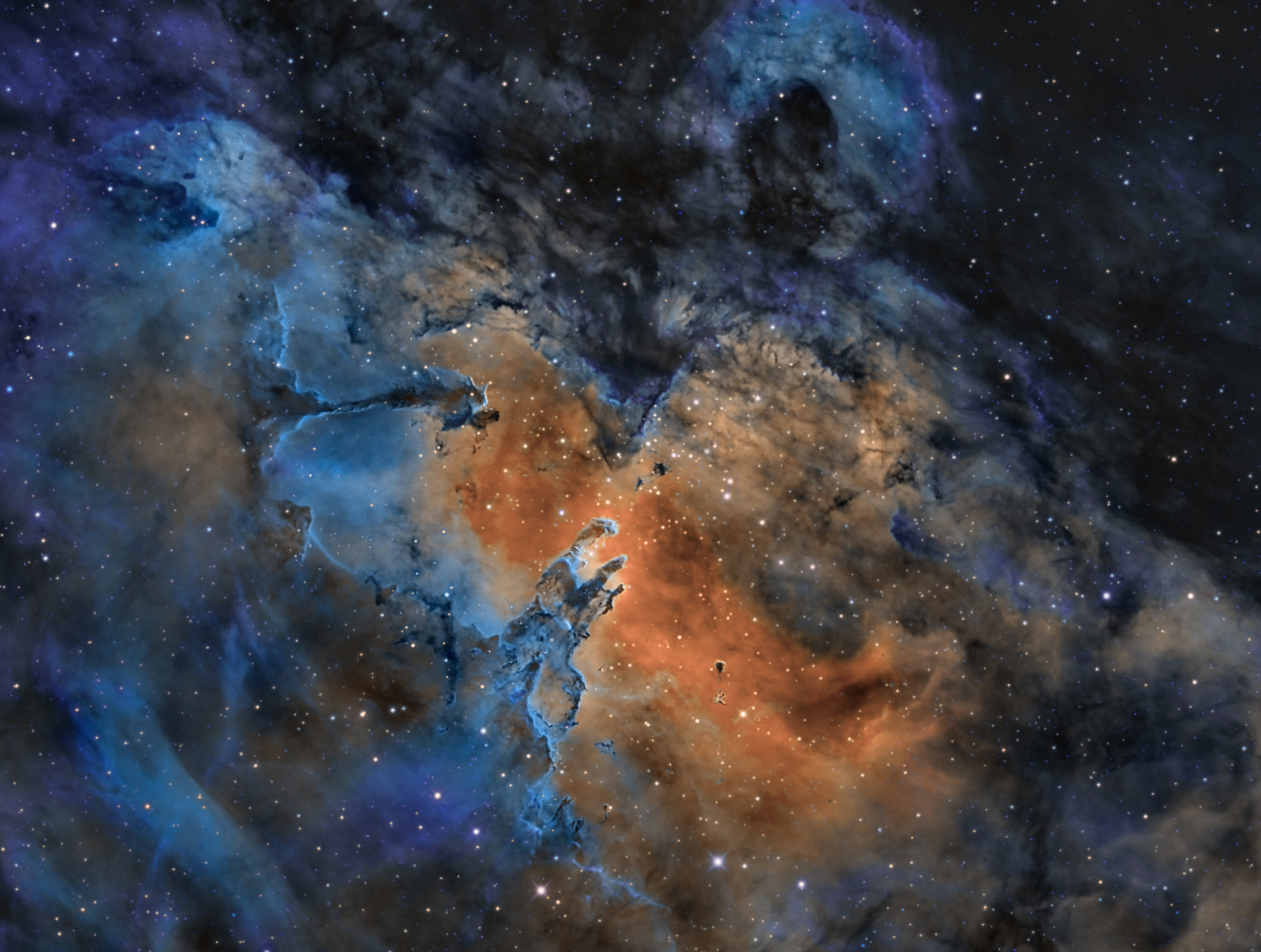The Cosmos with M16
The famous pillars of gas in the core of the Eagle’s nebula, known also as a star nursery, shooted using narrowband filters in the OIII, SII and Ha at 7nm, but mapped insted of the traditional Hubble Palette, in a OIII+Ha+SII palette (OIII for Red, Ha for Green and SII for Blue), giving a blueish color around the image with the center core in yellows, pushing the contrast between the pillars and the surrounding nebula and gases. The Eagle Nebula (catalogued as Messier 16 or M16, and as NGC 6611, and also known as the Star Queen Nebula and The Spire) is a young open cluster of stars in the constellation Serpens, discovered by Jean-Philippe de Cheseaux in 1745–46. Both the “Eagle” and the “Star Queen” refer to visual impressions of the dark silhouette near the center of the nebula, an area made famous as the “Pillars of Creation” imaged by the Hubble Space Telescope. The nebula contains several active star-forming gas and dust regions, including the aforementioned Pillars of Creation. The Eagle Nebula lies in the Sagittarius Arm of the Milky Way.
